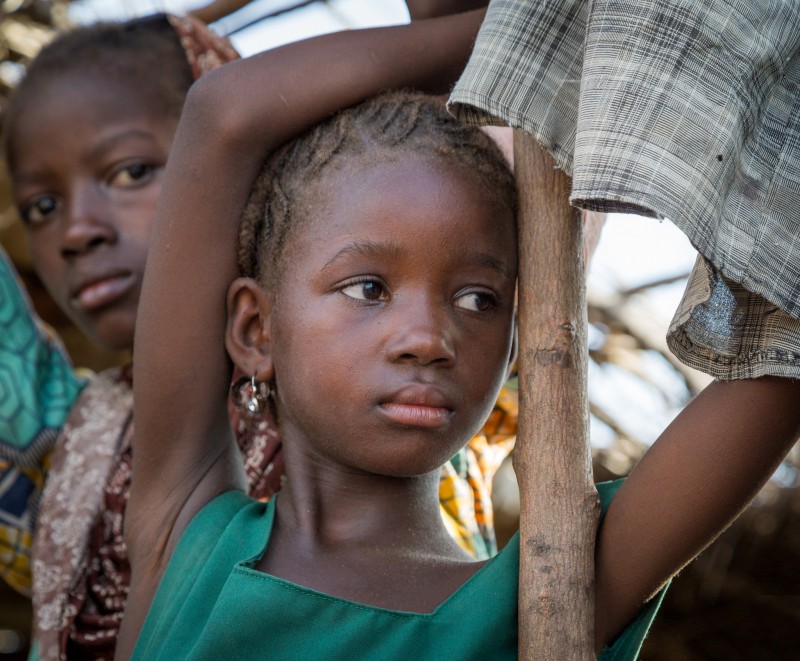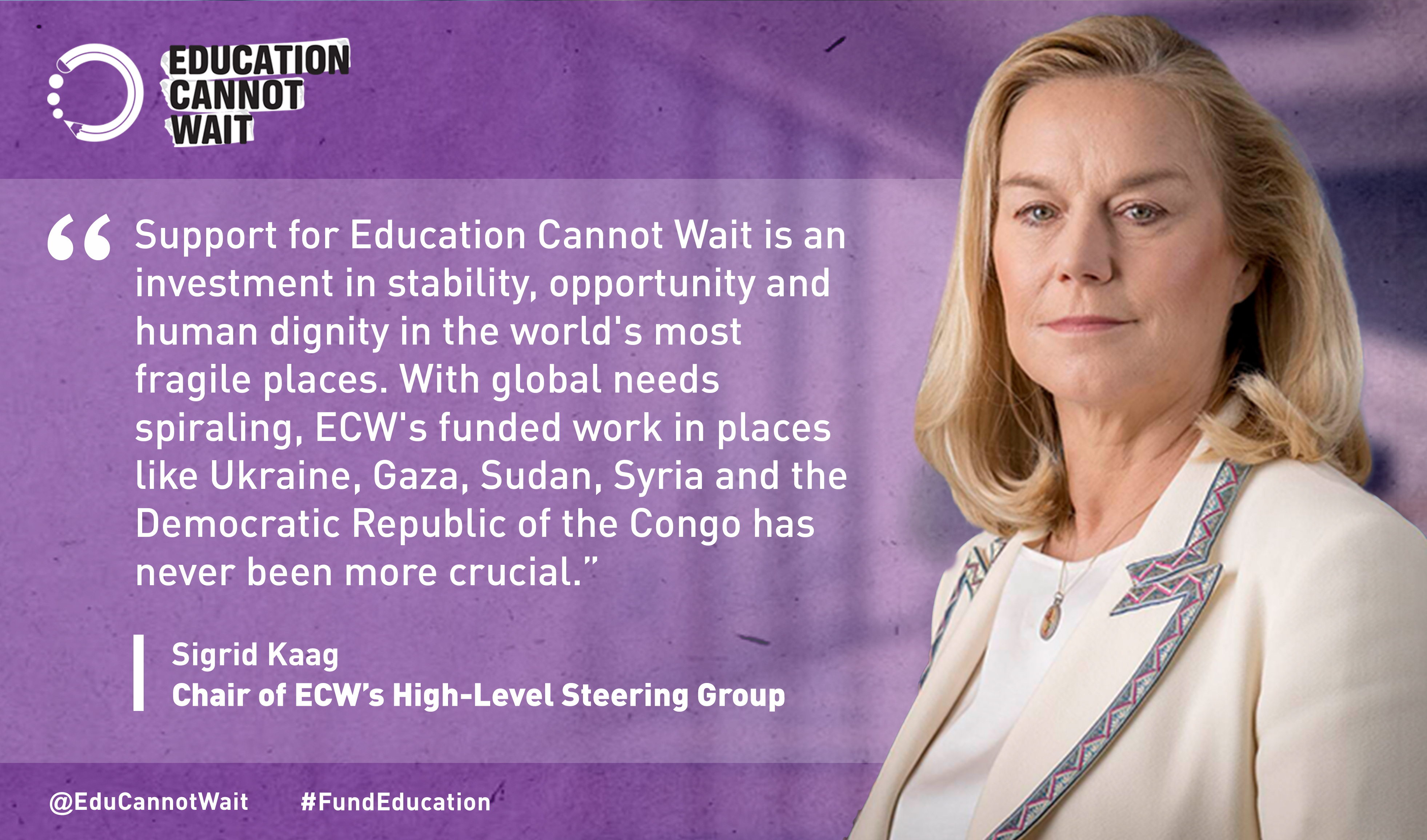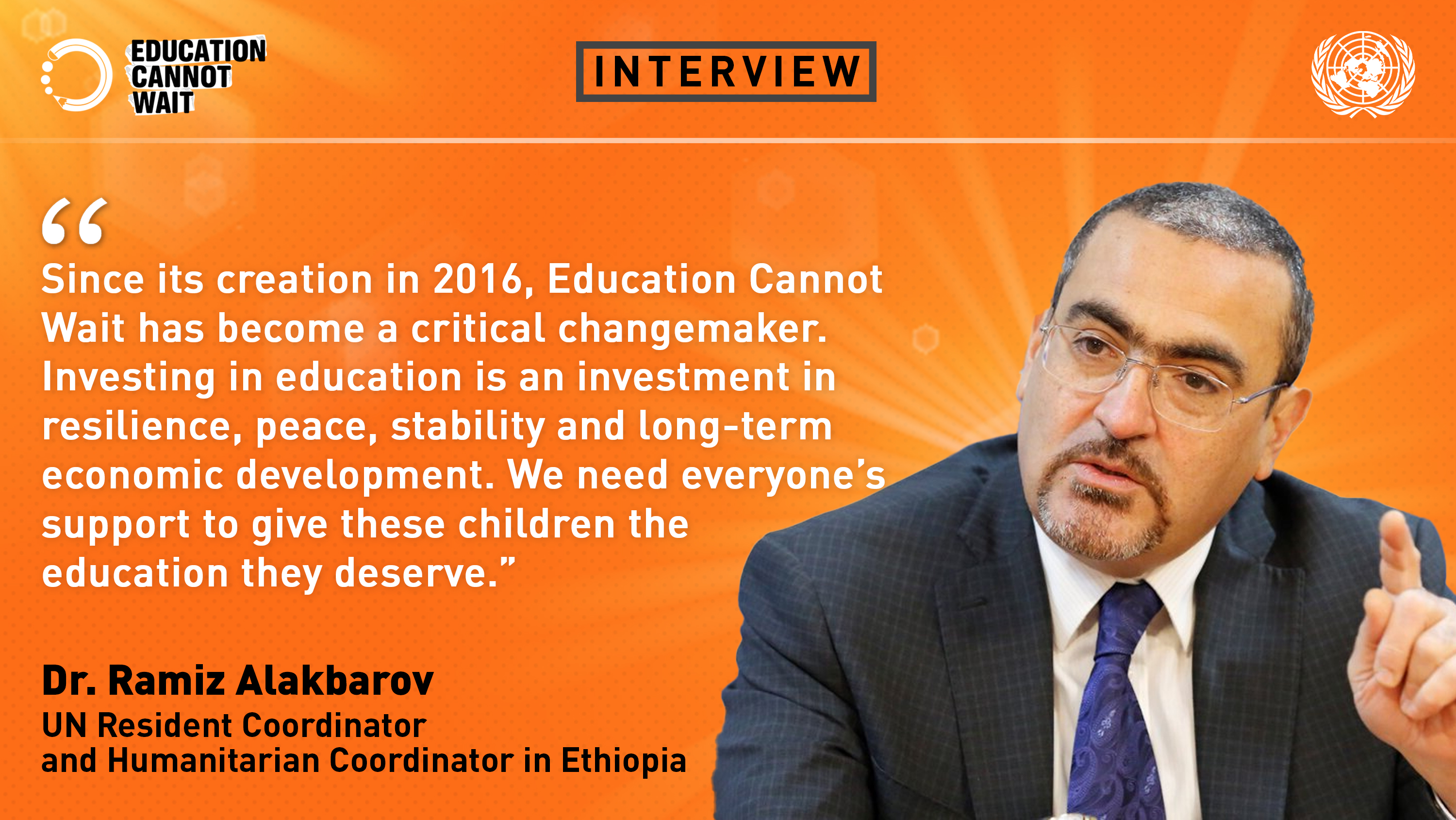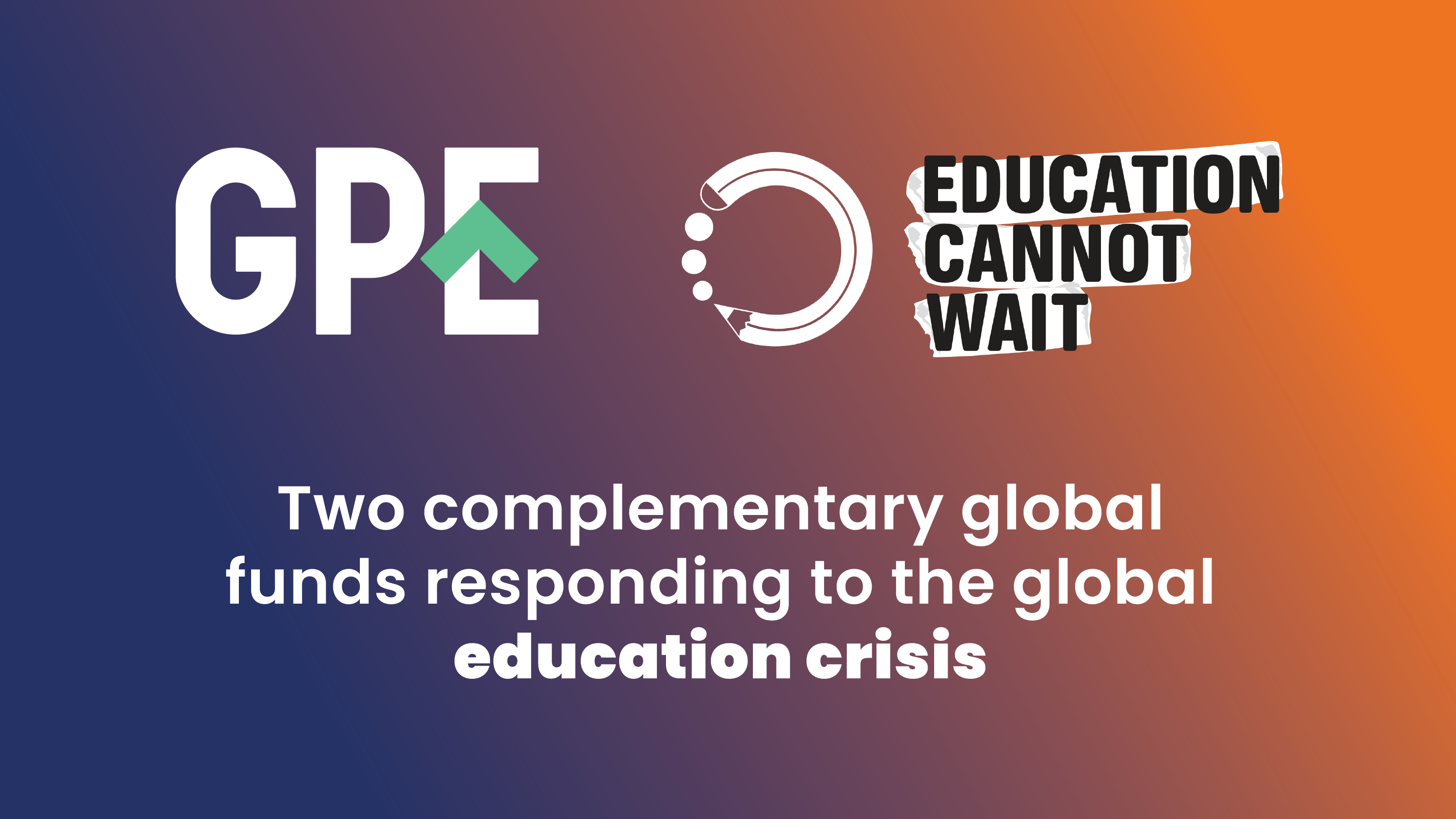Time Is of the Essence for Education Cannot Wait

Originally posted by the Global Partnership for Education
When it comes to educating children living amidst a humanitarian crisis, there’s no time to waste.
The dislocation, chaos and personal tragedies they and their families face make it difficult to get the schooling they need, when they need it.
Considering that, on average, conflicts in low-income countries last about 12 years and displacement due to protracted crises can drag on for 17 years, children caught in the maelstrom of natural disaster, war, health emergencies or breakdown of governance can miss out on all or most of the education they need to live prosperous, peaceful and healthy lives.
That’s why efforts to get the new Education Cannot Wait fund off the ground are moving with unprecedented speed and urgency.
Those involved with making the fund operational (GPE is one of its active partners) are acutely conscious that, currently, more people have been driven from their homes worldwide than since World War II, according the UN High Commissioner for Refugees, and approximately 75 million children (aged 3 to 18) are out of school in 35 crisis-affected countries.
Formally unveiled in May at the World Humanitarian Summit in Istanbul, the ECW fund is on track to receive country proposals for its initial investments, announce grants for three or four applicants by mid-September and begin on-the-ground implementation of that support shortly thereafter.
While the ECW secretariat is being established, dedicated teams support UNICEF as the interim host, working at Olympic speed to establish the administrative, policy making and advocacy functions that the fund will need to operate efficiently and effectively and fulfill its objectives. Even the nimblest of Silicon Valley start-ups would struggle to move at such a pace.
Breakneck, breakthrough fundraising
The fund’s High-Level Steering Group (which includes GPE Board Chair Julia Gillard as one of its members) is also moving rapidly to raise a first-year budget of US$150 million, paving the way to secure a projected need of approximately US$3.8 billion and reaching more than 34 million children over five years.
The United States, the United Kingdom, the European Commission, the Netherlands and Norway have already made commitments, contributing to reaching that first-year budget.
After a summer of appeals and outreach to multiple other donors by the five anchor funders and by the High-Level Steering Group, there will likely be more pledges by September.
A number of those prospective pledges could come from donors that have not historically contributed to global education. Shocked by the enormity of the current global refugee crisis and other humanitarian tragedies, many are considering drawing from their humanitarian assistance budgets to specifically support education, recognizing the importance of the sector to provide more stable and prosperous societies. The Fund is also reaching out to leading private sector entities – foundations and corporations – for support.
That’s a big and critical breakthrough. The global education sector has had good success over the last decade and a half getting many of the easiest-to-reach children into school.
The task for the next decade and a half is to solve a much more stubborn problem: providing education for the hardest to reach and the vast number of children suffering from humanitarian crises – close to 30% of the 263 million primary and secondary school age children and youth who are currently out of school.
The fund therefore has the potential to focus more desperately needed resources on this huge challenge and to bring us closer to achieving the international community’s vision of inclusive and equitable quality education for all.
A bridge between humanitarian aid and traditional development
Because education has too often been a low priority for humanitarian funding (less than 2% of humanitarian aid goes to education), the fund thus has the potential to break down the historical barriers between humanitarian and traditional development support for education and create a bridge between emergency assistance and development.
In a combined effort with different partners, the fund will also be able help to secure more predictable support especially in protracted crisis situations.
And GPE, which devoted more than 60% of its 2015 program implementation grants to fragile and conflict-affected countries and supports education in both crisis and traditional development contexts, is well positioned to strengthen this bridge between the two.
The Education Cannot Wait fund is also reinforcing efforts by GPE and other global education groups in recent years to demonstrate how education is an essential precursor to progress in other development sectors, such as health, economic development, improvement of girls’ and women’s wellbeing and conflict reduction.
The pressure is high and the time short for everyone involved with getting the new fund off the ground. But the clock ticks loudly and inexorably for children tragically upended by humanitarian crisis. They cannot wait years to be educated, and the need is too great to put off again. For their sake, and the world’s, we, too, must move quickly and decisively.
By Charles Tapp, Manager, Partnerships and External Relations, Global Partnership for Education.



